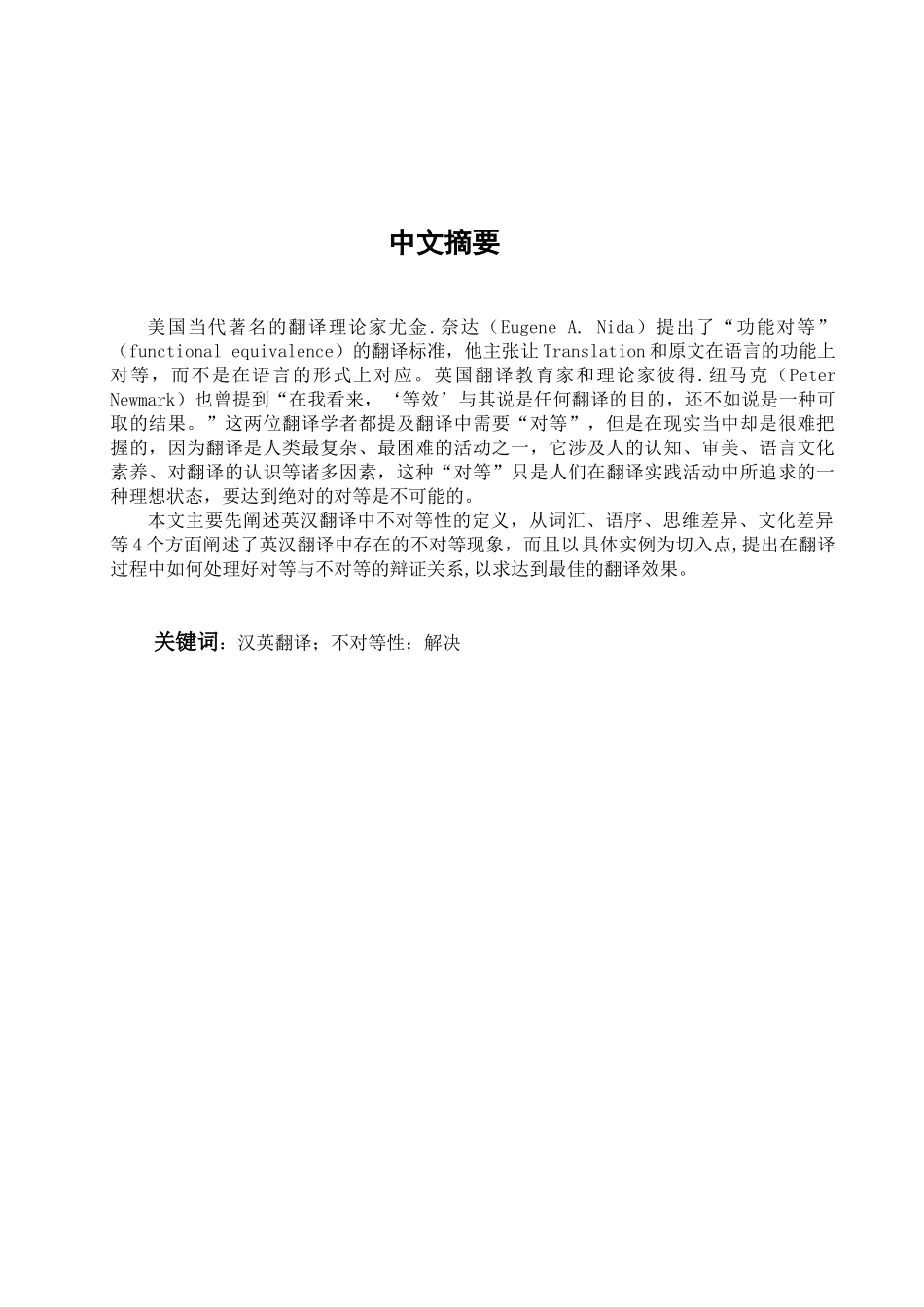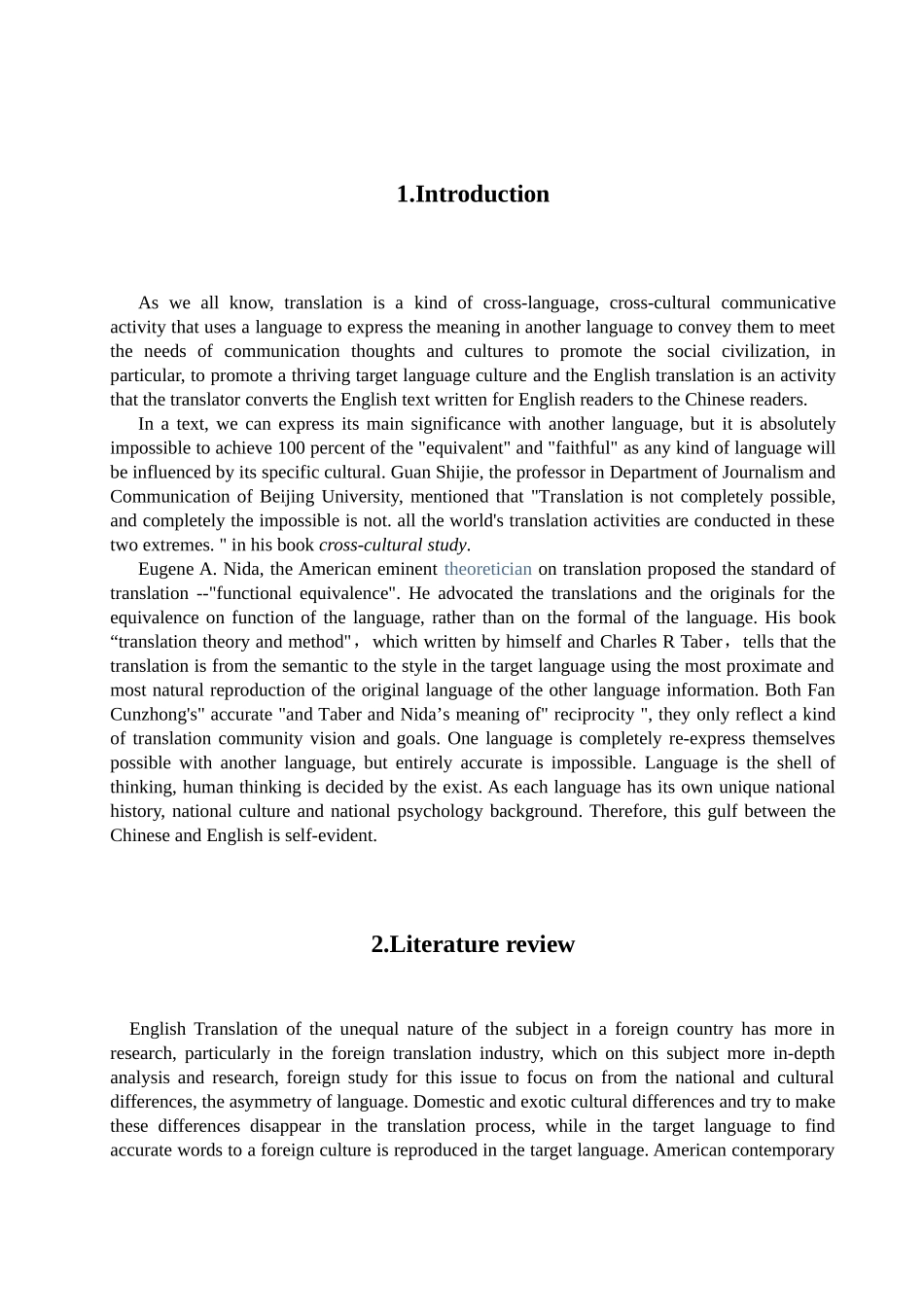5.2 Study the Original Information Carefully…………………………………………………… 146. Conclusion ……………………………………………………………………………………………15Bibliography………………………………………………………………………………………………16Acknowledgements…………………………………………………………………………………… 17 AbstractEugene A. Nida, the American eminent theoretician on translation proposed the standard of translation --"functional equivalence". He advocated the translations and the originals for the equivalence on function of the language, rather than on the formal of the language. Peter Newmark, the English educator and theorist on translation also mentioned that "In my view, 'equivalent' is not so much the purpose of any translation, but a desirable result."Both of the translation scholars mentioned above have indicated to the need for translation of "equivalent ", but in reality it is very difficult to grasp, because the translation is one of the most complex and most difficult activities, it involves people's cognitive, aesthetic, language, cultural awareness, translation knowledge and many other factors. Equivalent is just an ideal state we are in the pursuit of in the translation of practice, which could not achieve in our reality.In this essay, I describe the inequivalence in English-Chinese translation from four aspects--the vocabulary, part of speech, thinking differences and cultural differences, and put forward the method that how to handle the relationship between inequivalence and equivalence to achieve the best results by anglicizing concrete examples.Key words: Chinese-English translation;inequivalence; 中文摘要美国当代著名的翻译理论家尤金.奈达(Eugene A. Nida)提出了“功能对等”(functional equivalence)的翻译标...


